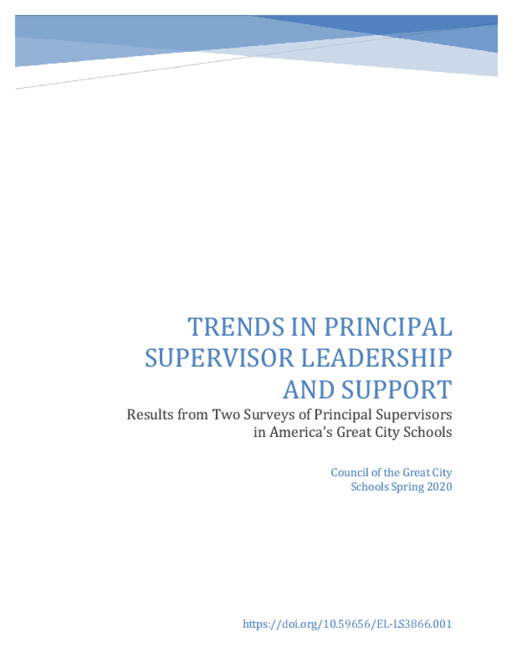Breadcrumb
- Wallace
- Reports
- Trends In Principal Supervisor L...
Trends in Principal Supervisor Leadership and Support
Overview
More
Less
- Author(s)
- Amanda Cochran, Ray Hart, and Mike Casserly
- Publisher(s)
- Council of the Great City Schools
Summary
In recent years, the principal’s job has become increasingly trained on supporting effective instruction. With that change, the idea has emerged that principals need a different type of supervision, one that focuses on helping them hone their instructional leadership skills.
Responses to two surveys, fielded six years apart, provide some indication that large districts are have begun to make the shift. The Council of the Great City Schools, which represents larger urban school systems, surveyed a sample of supervisors from its member districts in 2012 and a sample of supervisors from its member districts in 2018.
While the earlier group reported, on average, overseeing 24 principals, the latter group reported overseeing 16. This smaller “span of control” is a hallmark of changing the supervisor job; districts believe that with fewer school leaders to oversee, supervisors can focus more intensively on the needs of each principal. Indeed, the supervisors in the 2018 sample were also more likely than those in the 2012 sample to report carrying out instructionally focused activities with principals. Almost all of them, for example, reported that they visited classrooms with principals, up from 78 percent in the 2012 sample. Similarly, 96 percent in 2018 said they discussed student performance data with principals, compared with 59 percent from the 2012 group.
In sum, the authors say, a comparison of responses from the two samples suggests that “substantial progress has been made over the years” in shifting the supervisor role.
At the same time, the 2018 survey found evidence that the districts could do more to train supervisors and provide them with support from the central office. Less than half of the 2018 respondents reported, for example, that they had received professional development on key aspects of their jobs, such as identifying instructional quality in classroom observations (44 percent) or providing actionable/specific feedback to principals (31 percent). Only a quarter of the respondents said their districts had a program for aspiring supervisors or provided mentoring to those new to the job. And only a third of respondents said that central office facilitated their work with principals.
Taken together, the report concludes, the two surveys indicate that districts have been moving “to better define and align the instructional role of principal supervisors to improve the academic outcomes of schools and students.”

